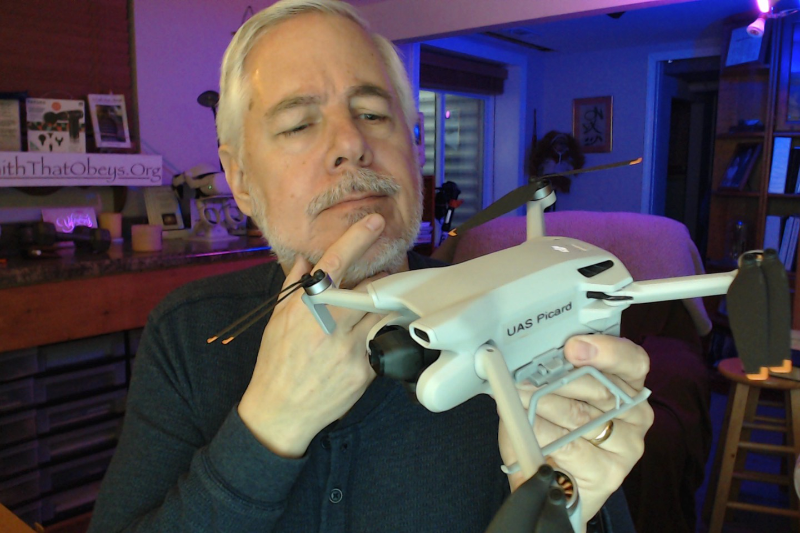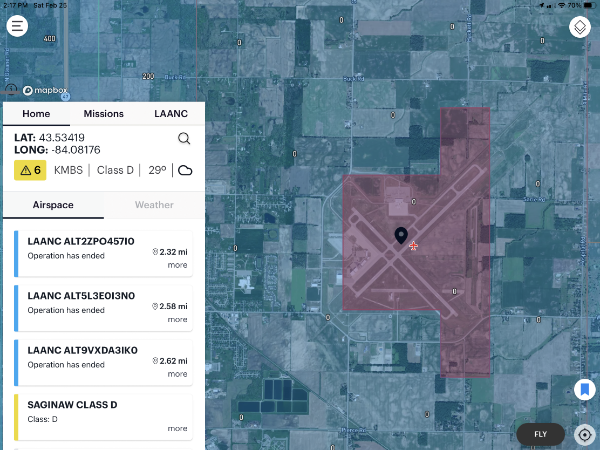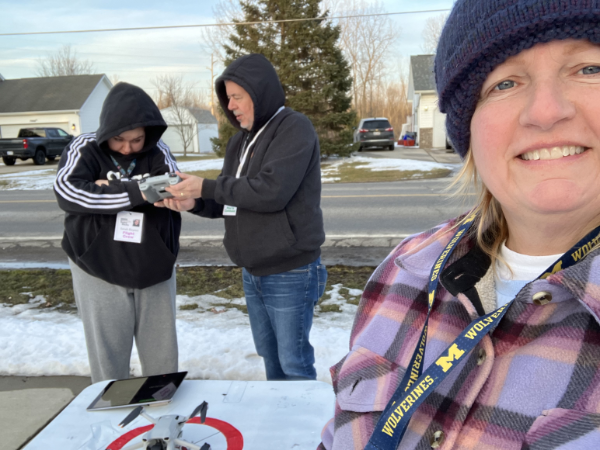I was not prepared for this experience.

As a tech guru supporting Apple products (MacHelpGlobal.com), I knew Apple was pretty keen on DJI Drones. As I recall, they actually offered them in their stores. Skipping the long story, I broke down a purchased a DJI Mini 3 and began reading and watching everything I could get my hands and eyeballs on regarding operating a drone.
Two Big Gotchas!
I quickly discovered two big “gotchas.” First was the fact that to do what I wanted to do, I would need to become a “Part 107” FAA Certified Drone Pilot. And just what did I want to do? I wanted to operate my drone for commercial purposes. I want to make money using it. In this matter, I quickly learned that I was not even allowed put my videos up on YouTube, if my channel was monetized, because that would be using my drone to make money. The FAA does not take kindly to breaking their rules.

The other big “gotcha” was the fact that I live within a five mile radius of a “Class D Airspace” airport. Drones can not fly in this airspace without ATC (Air Traffic Control) authorization. At first, these two issues seemed to bring everything to a screeching halt but I pressed on.
Familiar with Flying
When I was 22, I got my private pilot license. Aviation is in my blood but it has been a long time since I flew. As I began review the materials offered online for the FAA Part 107 test, I realized it was basically a crash course on the private pilot training I had years ago. It was familiar and fun to re-learn my earlier training. There are several really good training courses offered online and of course the FAA has all the training materials you will need to prepare you for taking the test. I love to learn new things and I am very comfortable being my own teacher, especially when there is so much material available on YouTube for free. If I had a question, I would just put it into the search box on YouTube and find the answers with ease. I found and took several practice tests online, then signed up for the FAA test through the PSI website as required by the FAA.
FAA Part 107 Test
On Valentines Day 2023, I passed my part 107 exam with a 93! About this same time, I discovered there is a blow-away app and website called “ALOFT” which enables a pilot to get authorization to fly in Class D airspace in a matter of minutes. All the major issues were solved. I had gone into this whole process thinking NOBODY could fly a drone within five miles of an airport and I am discovering that where I thought the FAA was going to be super restrictive, I am finding that the FAA is really supportive of the drone community. They are pushing forward with loosening up restrictions and giving licensed operators a framework in which to operate safely.
I imagine there is a very important dynamic between the Drone community and the FAA that is paving the way for something very big. Think about it. In the very near future we will be using drones to fly people and packages everywhere. I see this easily happening in the next 10 years. The technology is already available and ready to go. By fostering close ties to the drone community and working to develop a “grammar” of operations, so to speak, the industry as a whole is developing the foundation of what will be happening in the next few years. Safety is already at the forefront of this issue.
Flying a drone is dangerous!
Have you ever had a discussion about people flying in drones and you immediately get a negative response, “No way… that will be too dangerous!” My response to that is to ask the person if they have ever seen one of those drone shows where a thousand drones take to the sky at night a produce moving images and light shows. Most people have. Then I remind them, “Those drones don’t bump into each other. It will be the same with passenger drones!” Every drone will know where every other drone is in relation to its flight path and make adjustments instantly and accordingly. With all this in mind, this is why I think the FAA is moving carefully and decisively forward. The drone community is the experimental Petri Dish of experience on which the future will be built. I am excited to be a part of this burgeoning industry!

So, armed with my new FAA drone registration and pilot certification, I set my drone up, surrounded by my family, and we pushed the buttons and took to the skies. The video attached is one of the first videos I shot. It’s a little jerky with the camera moves but a wonderful snapshot of the beginning of this new chapter in my life.
Our first flights
The video begins with a shot of me with the controller sending the drone up slowly. There are several wires and trees in my yard so I have to be careful. I really considered making my yard a no-fly zone because of all the obstacles but once I saw the amazing stability and agileness of the DJI Mini 3 I decided that I had to learn to navigate obstacles anyway; so let’s get going. I reasoned that if I was hired to inspect a roof or a tower I needed to learn to get close enough to get good images so I’d better learn right here at home.
My first impressions of the DJI Mini 3 were…. “Where’s the noise?” This thing is quiet… super quiet. It’s honestly hard to hear the propellers spinning after it moves just 5 feet away from you. The second thing that impressed me was just how stable the drone is. I hit the launch button and it jumped off the landing pad about 3 feet, then just hovered. It just plain stops and waits for its first commands. This later became a super important comfort feature to know because if I get in a panic situation or am not sure which way to go… I just take my hands off the controls and the drone IMMEDIATELY stops and hovers. It is super stable, even in a decent breeze.
Next in the video, I take the drone up to about 100′ then re-position the camera to focus on me. Wow! I am really far away! I took a hard gulp and decided that since I was approved to 200′ feet, I should go up there and see what happens. That’s the next part of the video. Again, the drone performed amazingly well… super responsive. I went to 196 feet. Now that I am here, I re-aim the camera to get a little less sky in the picture and more of the ground. Once set, I began a slow yaw to the left and continue the turn for 360º. I am watching everything on the screen of my controller while keeping a sharp eye on my distant drone. I move the drone a little bit to the south, away form me, and I realize, this is hard to see against the gray sky! I’d better come down.
I move a little back to the north and spot the drone hovering. Wow! It is really high! (Still legal!) I decide to try the “Return to Home” feature and remember I always can instantly regain control if I see something not going the way it should. If you hit the pause button or just begin to fly manually, either of those actions cancel the return to home feature. The drone begins its decent with easy, coming directly down to the landing pad. I take manual control of the bird about 3/4 of the way down and land on the home-made landing pad my wife created for me. In video post production, I reframed the final few frames of the landing in Final Cut Pro, my editing software, so I could end the video with a full frame of the target image then fade into my logo.
Watch this video!
I am just stunned with what I have experienced. I guess I thought things were going to be really noisy and difficult to control. I thought I would be chasing this thing all over the neighborhood because I could not control it as first time drone pilot. My experience was far different than I thought it would be and I am really looking forward to developing my skills and using it in my video production business.
So there you have it. My first experience with a drone. I’ll stop now because I don’t want to be accused of being one of those guys who keeps droning on.

Leave a Reply